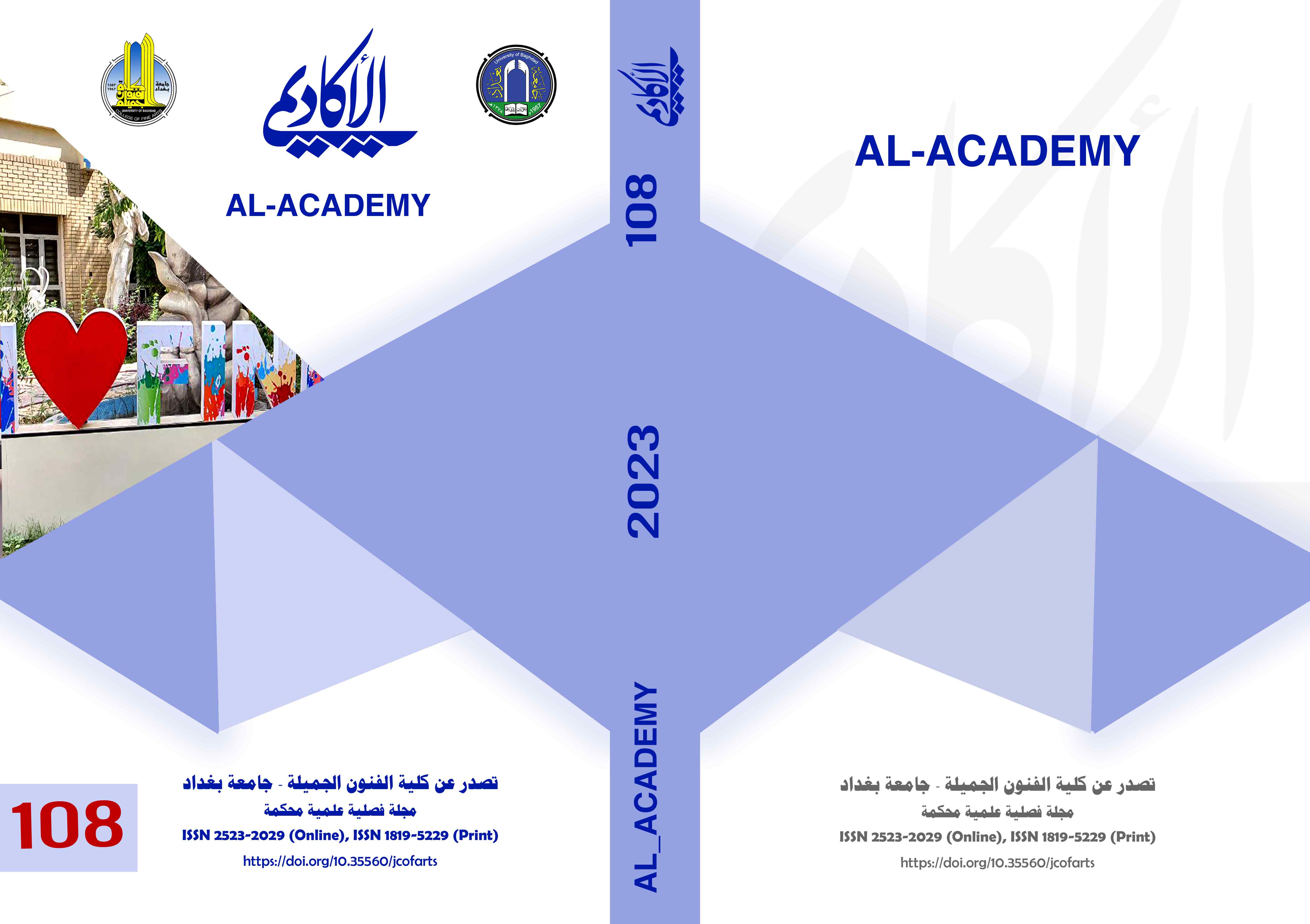Luxury in jewelry design
DOI:
https://doi.org/10.35560/jcofarts1132Keywords:
luxury، design، ornaments and jewelryAbstract
The current research dealt with the presence of ornaments and jewelry since ancient times، which express the social، religious or emotional status of the person who adorns them، in addition to being distinguished by a distinct aesthetic and luxury، that is، in a sense closely related to the social and economic status of people، and we note that jewelry is considered a symbol of luxury and luxury، and hence The need to study luxury appeared in the design of ornaments and jewelry because it refers to the adornment elements that are made of metals and precious stones، which actually indicate signs of status or position that distinguish social classes from each other. The problem was identified by the following question: Determine the effectiveness of luxury in the design of jewelry and jewelry? The research included two important topics. We will address them successively.
Below are some results and conclusions:
1. Luxury is of great importance in the field of distinguished and luxurious creativity of the industrial designer and industrial production institutions in the modern industrial world.
2. The emergence of luxury led to the fulfillment of the requests of users with trends and class of the velvet class of the rich، political figures، aristocratic classes and the global bourgeoisie.
References
Abdel Hamid, R. (2019, 2 17). Types of ornaments and jewelry. Retrieved from https://mqaall.com/types-jewelry-ornaments/.
Ahmad, M. (1995). Rules and Methods of Building Evaluation. Jordan: Dar Majdalawi for Publishing and Distribution.
Al-Alawi, H. (2014). Building Western Civilization (Components of Modernity and Elements of the Renaissance). Beirut: Center for Contemporary Research.
Al-Baalbaki, M. (1981). Al-Mawred. Beirut: Dar Al-Ilm for Millions.
Al-Chadirji, R. (2000). Dialogue in the Structuralism of Art and Architecture. London: Riyad Al-Rayes for Books and Publishing.
Al-Harasheh, E. (2020). What are the types of ornaments and jewelry. Retrieved from https://e3arabi.com/.
Al-Naraqi, M. (1966). The Mosque of Saadat. Beirut: Arab History Foundation for printing, publishing and distribution.
Al-Sadawi, M. (2017). Jewelry and ornaments are a special symbol of culture around the world. Retrieved from https://www.sayidaty.net/node/625336/.
Bernard. (1999). Early Evaluation of Product Properties Within the Integrated Product Development. Germany: echnische Universidad Munched.
de Barnier, V. (2012). Do consumers perceive three levels of luxury? B.B: Journal of Brand Management.
Ibn Manzoor, M. (1984). Lisan Al-Arab. Egypt: Dar Al-Maarif for Publishing and Distribution.
John. (1987). Creating Architectural Theory. New York: Van No strand and Reinhold Company.
l-Muqram, A. (2010). Exaltedness in Architecture, a study on the manifestation of the concept of sublime beauty in the architectural form through structural treatments. Baghdad: Engineering and Technology Journal, Volume 28, No. 18.
Massoud, G. (1992). Lexicon of Al-Raed. Beirut: House of Knowledge for Millions.
Nelson, M. (2018). Excavated Roman Jewelry: The Case of the Gold Body Chains. B.B: The Adventure of the Illustrious Scholar.
Ulrich, E. (2011). Product Design & Development. Boston: McGraw Hill.
Veronica. (2021). Jewelry Design in the Luxury Sector: Artistry, Craft, Technology and Sustainability. Singapore: Springer.
Downloads
Published
Issue
Section
License
Copyright (c) 2023 Aya Qutayba Abdul Khaleq, Nawal Mohsen Ali

This work is licensed under a Creative Commons Attribution 4.0 International License.













